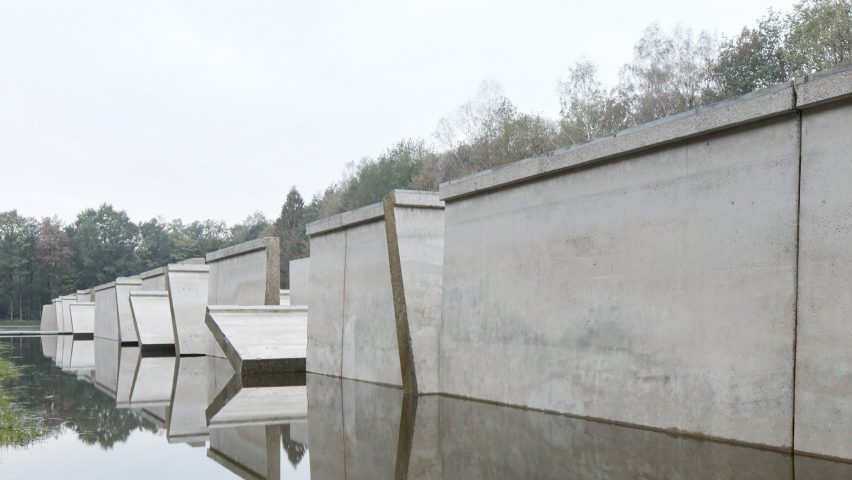
RAAAF and Atelier de Lyon slice open huge wave machine to create Deltawerk monument
A 250-metre-long concrete basin, built in the Netherlands in 1977 to test defences against rising sea levels, is ripped apart and flooded to form this colossal artwork.
Dutch studios RAAAF and Atelier de Lyon transformed the disused Delta Flume at Waterloopbos to create the huge installation, billed as "a monument of the Dutch struggle against the water".
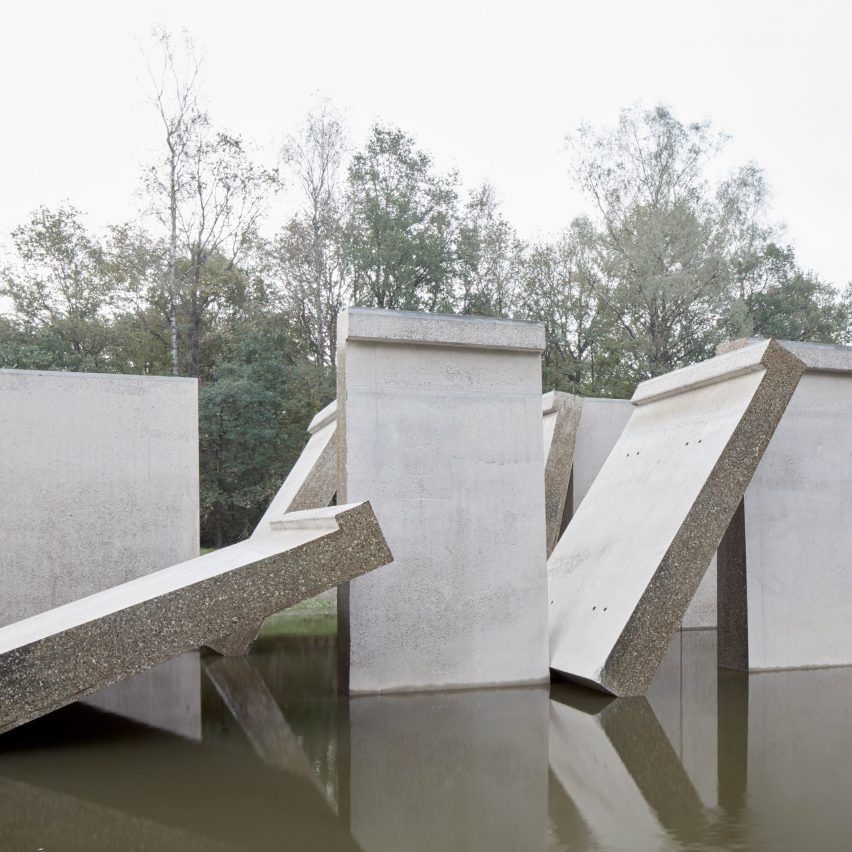
Called Deltawerk, the structure now stands a series of massive concrete slabs propped up against one another. These slabs are surrounded by water and many of them appear ready to topple at any moment.
The Delta Flume was one of numerous dams, sluices, locks and levees built along the coast of the Netherlands in the mid-20th century. It formed part of the Delta Works, which saw the nation trial different approaches to water management.
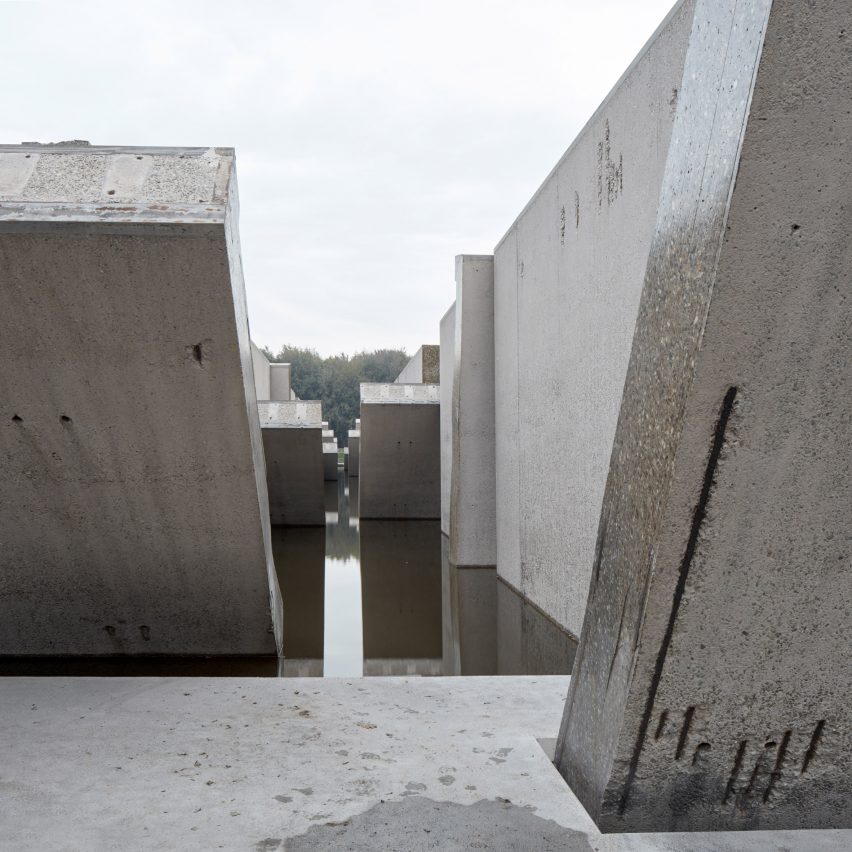
The aim of the hydrodynamic laboratory at Waterloopbos was to test how indestructible deltas could serve in the battle against flooding – a technology that is seen as one of the country's greatest scientific achievements.
The long concrete basin served as a wave machine, allowing engineers to experiment with tsunami waves below sea level.
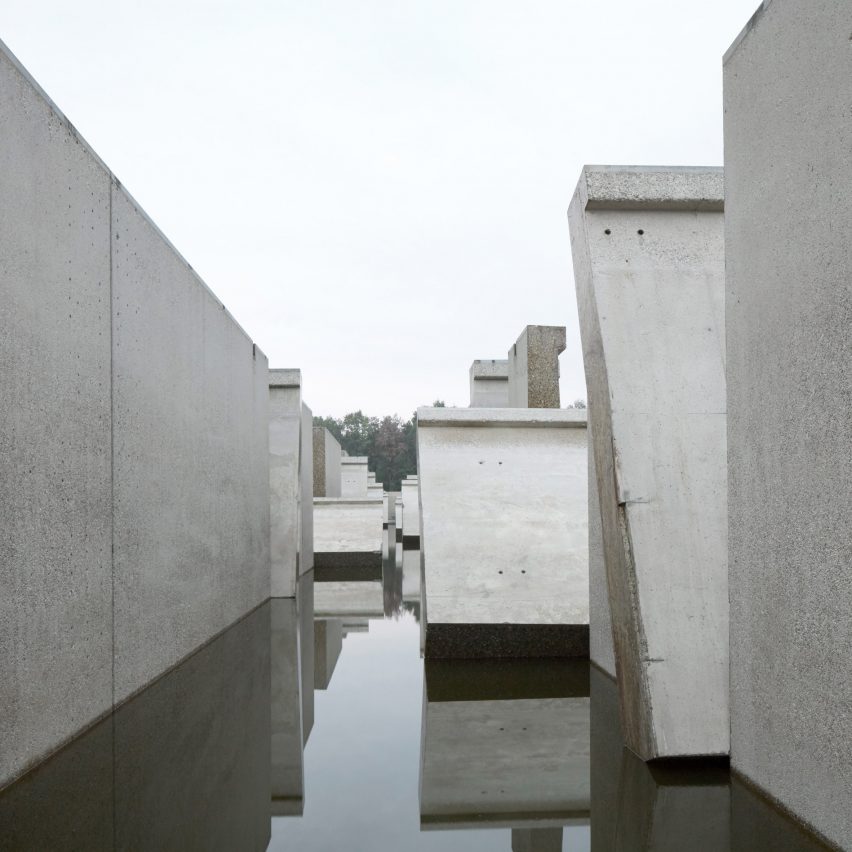
"The Waterloopbos was essentially a laboratory as large as an entire piece of landscape, where scale models and 1:1 tests could be carried out, informing the design and engineering of the Delta Works on the coast, as well as a few waterworks later on," explained Ronald Rietveld, co-founder of RAAAF.
"The Delta Flume remains the most impressive permanent construction in this landscape of scale models," he told Dezeen.
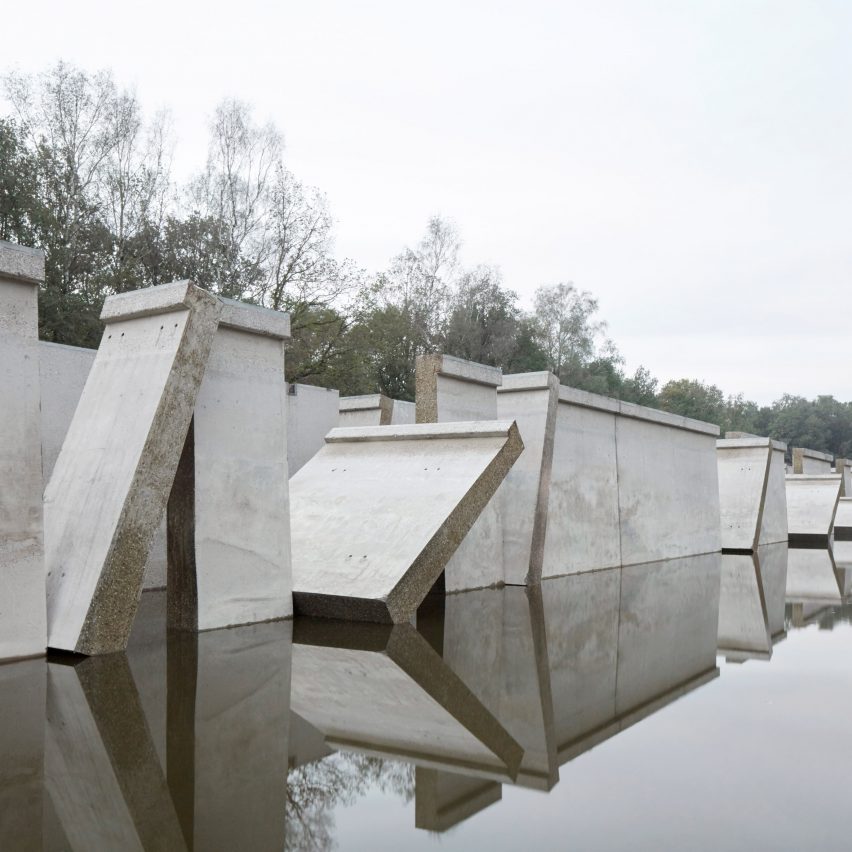
The test lab closed down a decade ago and the site naturally fell into decline.
But following an unsolicited proposal from RAAAF and Atelier de Lyon, the site was named by the government as a national monument. The two studios were then invited to transform the old wave machine into a large-scale artwork.

The two studios had previously worked together on Bunker 599, a project that saw a redundant second world war bunker sliced in half.
"Just like our cut-through national monument Bunker 599, the artwork is a call for a radically different approach to cultural heritage," said Rietveld. "We call this approach Hardcore Heritage."
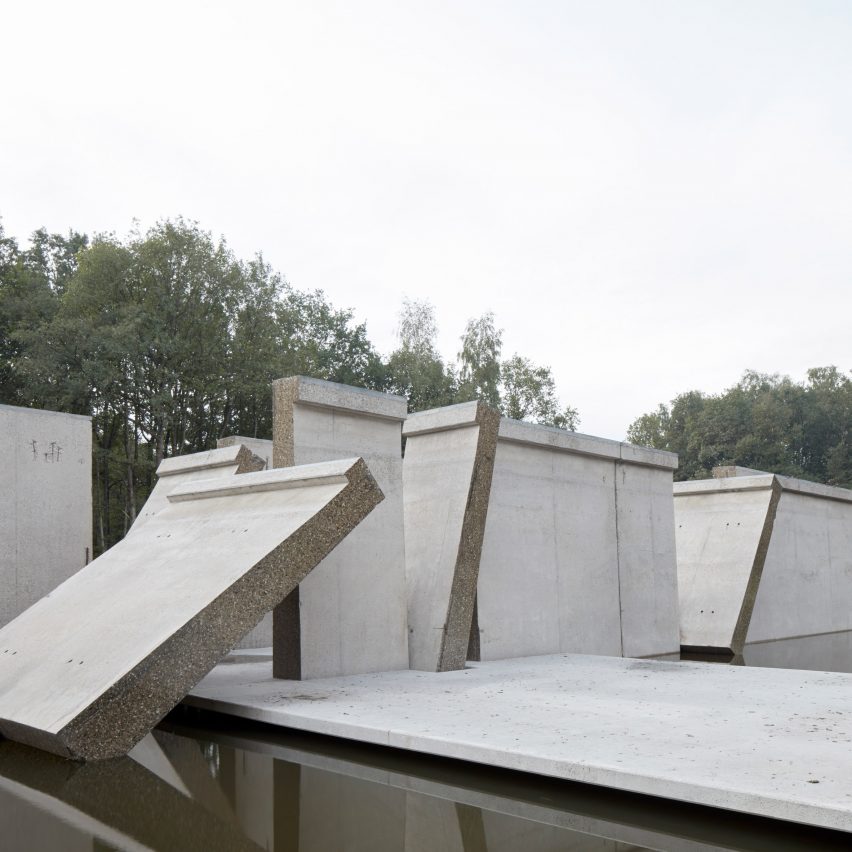
Their idea was to carve out openings in the 800-millimetre-thick walls, to frame apertures of the surroundings. The pieces carved out were then rotated 90 degrees and slotted back inside the voids.
The designers also excavated the sand around the flume, allowing seawater to engulf the base of the concrete.
"Deltawerk questions the pursuit of indestructability, and at the same time serves as an experiment in active ruin generation," added Rietveld.
"This new space offers an intense spatial experience of light, shadows and reflections, while opening up vistas on the surrounding Waterloopbos."
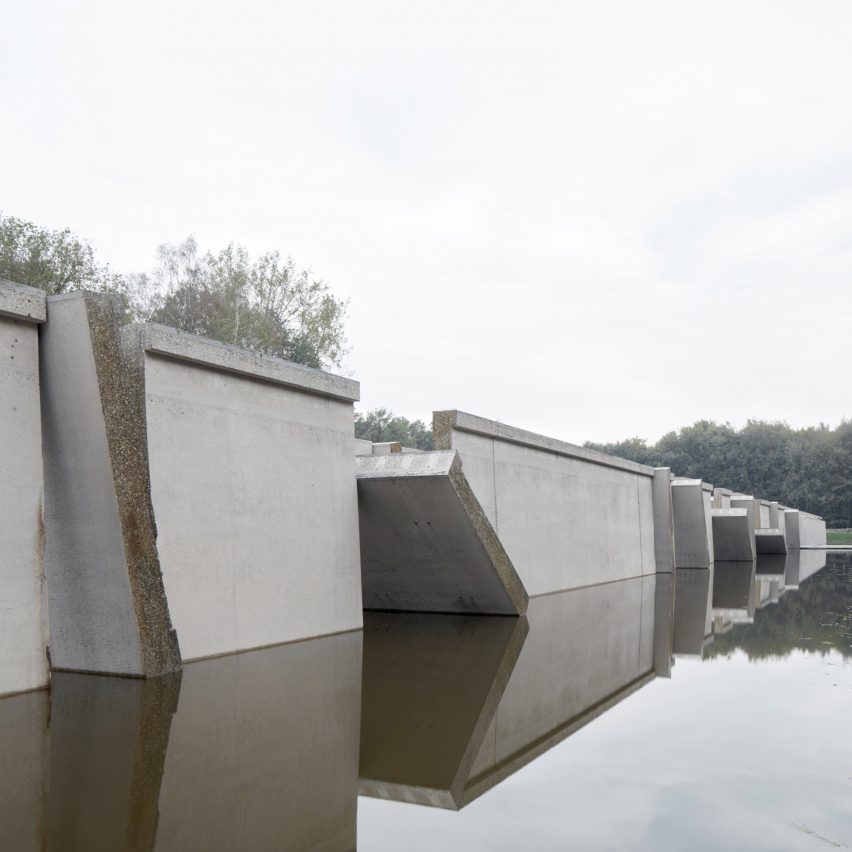
RAAAF is a multidisciplinary practice led by Ronald and his brother Erik Rietveld, while Atelier de Lyon is the studio of artist Erick de Lyon. The two studios first unveiled their plans for Deltawerk in early 2017.
The installation took seven months to complete, which Rietveld said was short, "for such a massive scale and technically complex project".
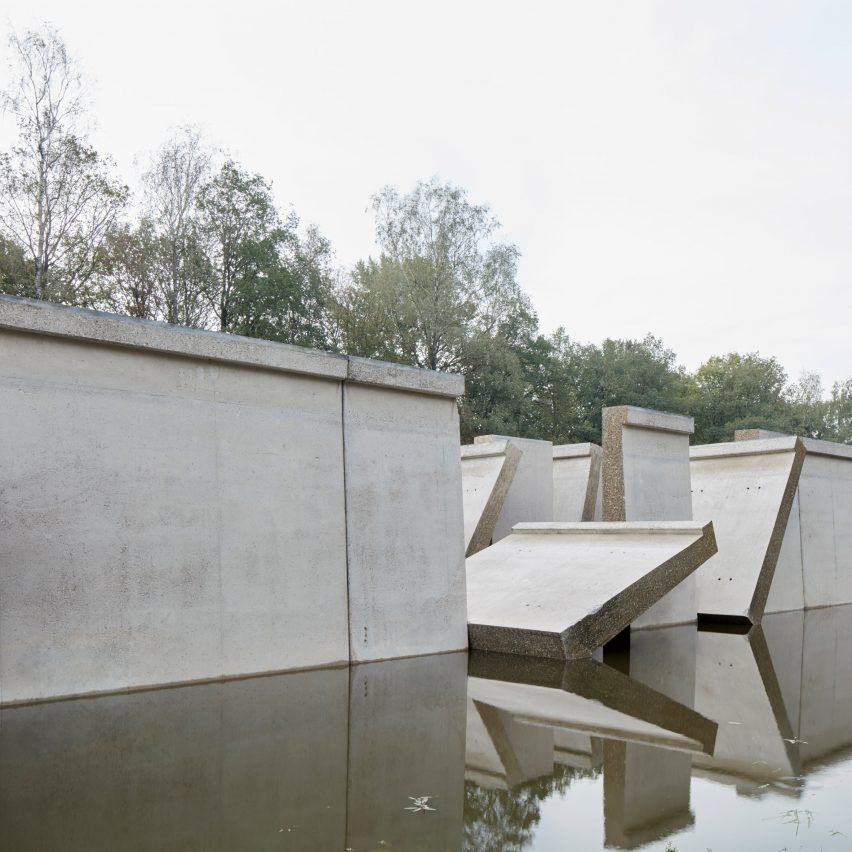
The sculpture will now remain on view to the public permanently – according to the designers it is virtually indestructible.
"It can even survive another thousand years," added Rietveld. "In the near future, the slabs will be colonised by mosses and ferns – it will change through the days, seasons and years."
Photography is by Jan Kempenaers.
Project credits:
Client: Natuurmonumenten, Dutch Cultural Heritage Agency
Design: RAAAF, Atelier de Lyon
Team: Erick de Lyon, Ronald and Erik Rietveld, David Habets
Assistance: Joop Schroën, Cecile Diama-Samb, Johnny Long, Francien van Kempen, Mariana Fernandez, Phaedra de Lyon
Construction advice: Nico Plukkel
Realisation: Dikkerboom & Hompert - Rennes